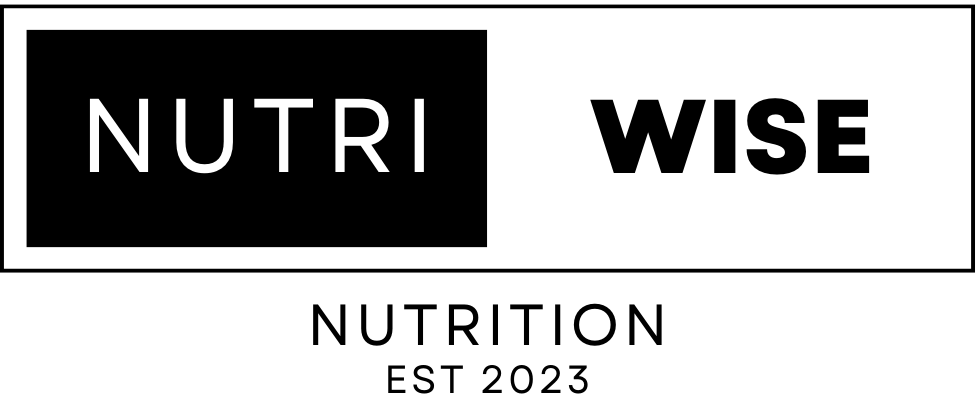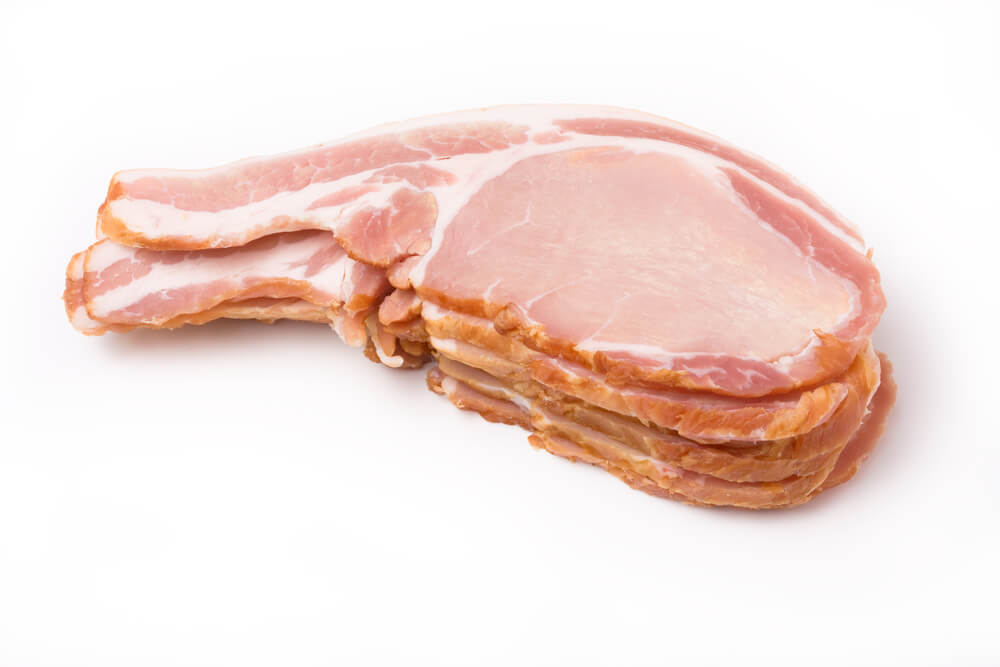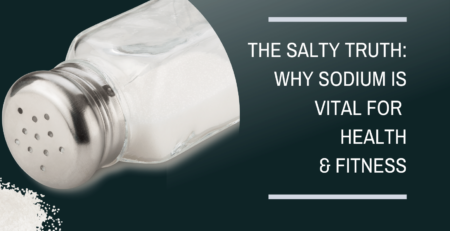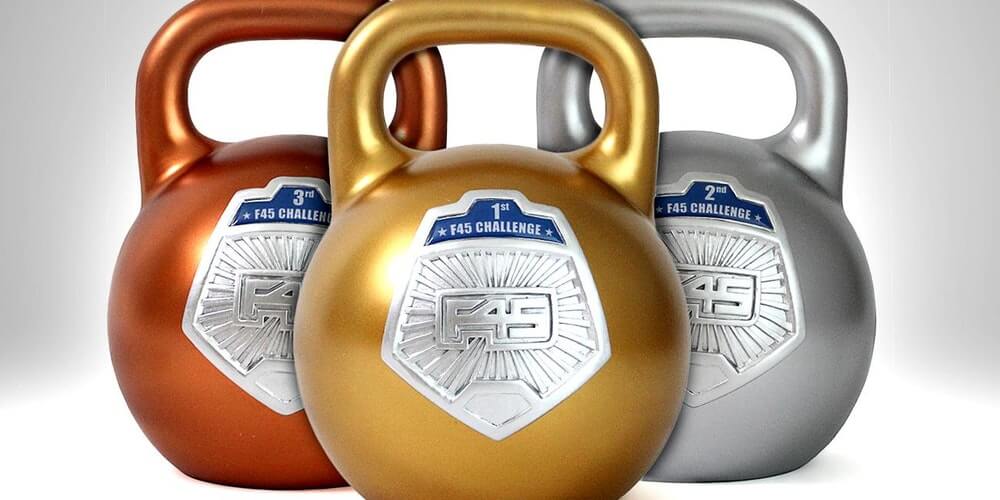Calories 101 – Calculating And Understanding Your Calorie Needs
A calorie is a unit of energy which is used to measure the amount of energy stored in food. In nutrition, calories are used to measure the amount of energy a person consumes and uses each day. The number of calories a person needs depends on their age, gender, height, weight and activity level. Generally speaking, men need more calories than women due to their higher body mass and higher muscle mass.
The amount of calories someone needs is calculated by multiplying their basal metabolic rate with an activity factor. The basal metabolic rate is the number of calories our bodies need when at rest for normal bodily functions such as breathing, digesting food and keeping warm or cool. It can be estimated by using equations based on age, gender and body size. The activity factor takes into account the intensity and duration of physical activity undertaken in an individual’s lifestyle.
My preferred calculator is tdeecalculator.net because its simple enough for anyone to use, but can be made more accurate by adding how much body fat you have.
Calculating your daily calorie needs accurately can help you maintain a healthy weight and provide your body with enough energy for everyday activities. It also helps you plan ahead when it comes to eating meals or snacks throughout the day so that you get all the essential nutrients necessary for optimal health without consuming too many or too few calories.
Estimating Your Calorie Needs (TDEE)
Estimating calorie needs is an important step in developing a nutrition plan. It’s important to note that all measurements of calculating calories are estimates because it’s impossible to determine the exact need day to day because factors such as activity and the amount of food we eat change. To do this accurately, one must consider several factors such as age, gender, activity level, and body composition which are taken into account in the calculator provided earlier. As you observe your bodies reaction to different calorie loads over time you will gain a greater understanding of what your true requirements are and how they vary from the estimation.
Calorie needs, also known as a Total Daily Energy Expenditure (TDEE) can be estimated based on a person’s basal metabolic rate (BMR), or the amount of energy needed to maintain basic bodily functions. The Harris-Benedict equation is often used to calculate BMR by multiplying the weight in kilograms by a factor that takes into account height and age. After obtaining the BMR value, physical activity levels should also be considered for more accurate calorie estimates. For instance, sedentary individuals have an additional 0-400 calories added to their BMR per day while those with moderate activity levels will need 200-600 extra calories each day compared to their BMR value.
Finally, it is important to remember that the goal and experience level of the individual come in to play with regards to how many calories are needed to elicit the result. Those who wish to lose weight must reduce their caloric intake while those attempting to gain weight should increase their calories accordingly. It is essential to adjust caloric intake and expenditure based on changes in body composition and activity levels for optimal health maintenance over time.
Understanding Your Basal Metabolic Rate (BMR)
Basal metabolic rate (BMR) is an important factor to consider when estimating your calorie needs. BMR is the number of calories required to keep your body functioning at rest. It accounts for around 60-75% of the total energy expenditure. As such, it is important to understand how this measurement works and its implications when calculating your calorie needs.
The BMR calculation is based on age, gender, height and weight. Gender has a significant impact on the BMR; men usually have a higher BMR than women due to having more muscle mass and body weight. Age also has an influence on BMR, as it decreases with age due to a decrease in muscle mass and other physiological changes. Height and weight are also important factors as they influence the amount of energy needed for basic bodily functions such as breathing and digestion. Activity plays some part in BMR as well due to the bodies energy requirements in the repair of damage caused throughout the day, more activity means more damage which increases the BMR accordingly.
Exercise and activity are separate factors and do not play directly into the BMR calculation, but it is factored in to some equations. For this reason it is suggested to use one calculation method and stick with it over time as changes in calculation methods yield changes in caloric estimates which can be confusing.
It is therefore essential to obtain accurate measurements of these variables when calculating your calorie needs. Knowing your basal metabolic rate can help you ensure that you are consuming the right amount of calories for optimal health and fitness goals. Additionally, understanding this key concept can help you make informed decisions about nutrition and lifestyle choices that will benefit both your physical and mental wellbeing in the long run.
Estimating Your Activity Level (EA)
Estimating activity level in order to calculate calorie needs is an important step in determining optimal nutrition. Activity level is determined by the daily physical activity performed, including both exercise and other activities like household work or walking to work. This estimation of activity level can be divided into two categories: metabolic equivalents (METs) and physical activity intensity levels (PAILs).
Metabolic equivalents are a measure of energy expenditure per hour of physical activity, with 1 MET equivalent to the rate of energy expenditure while at rest. The number of METs an individual engages in during their day helps to estimate their total calorie needs. PAILs are another useful tool for estimating calorie needs and are measured on a scale from light to vigorous intensity, based on the amount of energy expended during activities such as lifting weights or running.
Accurately predicting calorie needs requires a combination of both METs and PAILs, as well as considering factors like age, gender, body size, and genetics. It is important to take into account all these variables when determining caloric requirements for each individual. Additionally, individuals should adjust their caloric intake if changes occur in any of these variables over time. By taking all these elements into consideration and accurately estimating activity levels it will be possible to determine individualised calorie needs for optimal nutrition.
Thermic Effect Of Food (TEF)
The food we eat that contains calories also requires calories to digest and absorb nutrients. The energy expenditure of digestion is referred to as Thermic Effect of Food (TEF) and it can be a confusing topic, but there are some generalities that can be used to simplify it when working out your TDEE.
Generally the thermic effect of food is between 10-20% of the total calories consumed. That’s a wide variance because there are many factors to consider like the complexity of the food consumed and the individuals ability to break it down. Diets higher in protein and fiber have a higher TEF because these nutrients are harder to break down. Have you ever eaten a lot of meat and gotten meat sweats? This is how thermic protein is when the body needs to digest a large amount – the body actually heats up from the energy required to process it.
As mentioned earlier this is about estimating and not knowing exact amounts. Set yourself an estimate you’re happy with and go with that, just remember the more calories you consume the more digestion is required, therefore more calories will be accounted for by TEF and this reduces when cutting calories. You can manipulate this variable by consuming higher protein in your diet.
Calculating Your Total Calorie Needs (TDEE)
Calculating your total calorie needs is a vital step in understanding how many calories you should consume each day. The formula is:
BMR + TEF + EA = TDEE
Now we discussed these aspects of your TDEE earlier and you’ve got a link to a calculator, what comes next? Consistency in those areas to maintain the TDEE level. A drop in TDEE can be caused by not hitting the correctly prescribed food targets or activity levels! This then affects the desired outcome for the calorie prescription.
Given a lot of this is out of your control you need to know what variables you can manipulate to maintain the estimated TDEE and even upregulate it. From here on our we’re going to delve deeper into areas you can use to boost your TDEE and the variables you can manipulate to affect change and achieve your goals.
Factors That Affect Your Calorie Needs
As we have discussed earlier there are base line factors that affect your calorie requirements and a lot of these are outside of your control. For clarity lets list them out:
- Age
- Gender
- Height
- Thermic Effect of Food
- Underlying health conditions
- Body size
- Genetics
Playing with these variables directly is off the table. You are who you are and your body responds the way it responds based on how you’re programmed. Now lets look at factors you can directly control which will impact those we can’t:
- Amount of calories consumed
- Composition of food
- Macronutrient intake
- Intentional exercise
- Non Exercise Attributed Thermogenesis (NEAT)
- Consistency
- Sleep & recovery
Your ability to control these variables allows you to impact those you cannot directly control. For example, I have discussed empty calories before – lets say your TDEE is 3000 calories and you eat just junk food to get there. We can safely assume there wasn’t a lot of fiber in the calories consumed, there was also a lot of carbohydrate and fats without a great deal of protein. Readjusting the same 3000 calories to consist of a balanced breakdown of adequate protein, moderate carbohydrates and fats provides us with a different outcome.
Intentional exercise and the associated recovery from it play a big role in the upregulation of your BMR. Exercise break down muscle tissue, which the body must repair through the hours after training. The vast majority of this is done during the night while you sleep. If you’re not prioritising quality sleep the recovery and associated muscle gains will suffer.
NEAT or Non Exercise Attributed Thermogenesis is generally referred to as being out of your control, but many coaches measure it with step counts. To a certain extent this can be considered exercise, but its a great way to ensure that the body is consistently active. When the body is placed in a severe calorie deficit it down regulates things like leg bouncing and fidgeting which can utilise hundreds of extra calories every day. Increasing steps is a great way to counter this effect.
Above all else there is consistency. Consistency trumps the effect of effort over the long term. If you’re not sticking to your plan then the variables in your plan that are included to elicit the response you desire are going to be ineffective.
It can seem like an impossible task when we observe those factors outside of our control, but through careful planning, attention to details and consistency we can affect change in the areas we otherwise have little to no control over.
Adjusting Your Calorie Intake For Weight Loss Or Gain
Adjusting one’s calorie intake is a necessary step in order to achieve a healthy maintenance of weight, loss or gain. At this point in this article you now know all the factors affecting how may calories someone needs to consume but we will begin to explore the methods of adjustment based on these factors.
For those looking to lose weight, reducing the number of calories consumed promotes weight loss. You should be aware that taking generic advice such as decreasing one’s caloric intake by 500-1000 kcal per day will result in weight loss, but given we know there are many variables that affect our TDEE there are better and more accurate ways to adjust calorie intake. It is important to note that reducing your caloric intake too close to and below your BMR per day can result in a wide range of health issues, such as amenorrhea due to a drastic and sudden slow down your metabolic rate.
Weight Loss Calories
There is no one size fits all prescription for the calories everyone needs to use to lose weight. The best way to start though, is to calculate your maintenance calories. From there we have an estimate about how much your TDEE is. Then, simply eat less than that right?
Yes, but hold on. There is such a thing as eating too little. Start by deducting 10% from your maintenance calories and go from there. So, for example, if your maintenance calories are 2000 you need to deduct 10%, which is 200 calories from 2000. Your daily target for food intake is 1800 calories.
Track your food intake with MyFitnessPal and ensure you don’t go over that number. As results start to slow down or stop, drop another 5-10% in calories (as measured from your maintenance) and continue. To provide a visual – If you graphed it out over time it would likely look like steps, not a cliff. We want to stroll down the steps, not fall off a cliff when it comes to weight loss.
Weight Gain Calories
On the other hand, those looking to gain weight should increase their caloric intake with balanced meals and snacks throughout the day in order to build muscle mass or gain additional weight as needed. As with weight loss calories, weight gain calories require a little math to work out. Work our your maintenance calories and start by adding 10% and go from there. So, for example, if your maintenance calories are 2000 you need to add 10%, which is 200 calories. Your daily target for food intake is 2200 calories.
Eating more calorie dense yet nutritious foods while increasing physical activity can lead to gradual and sustainable changes in body composition. As with any dietary adjustment, it is essential to pay attention to how you feel physically and mentally during this process in order to ensure that you maintain a healthy lifestyle and reach your goals safely.
Eating The Right Amount Of Calories
It is essential to understand the concept of eating the right amount of calories for an individual’s body type and lifestyle. With the many variables at play in the human body day to day the consistency of calorie intake is what you need to ensure in order to see the response you desire. Remember that calorie measurements for your TDEE are estimates as is the calorie content of the food you consume so use the same entries in MyFitnessPal, the same method of measurement where you can and limit the amount of unknown calories you consume.
In the end, it’s better to measure and get it wrong than not measure at all and just assume. For example, if you consistently use the wrong entry for chicken breast, but aren’t maintaining your muscle mass or gaining it, you need more protein. The fact you’ve been using the wrong entry in MyFitnessPal doesn’t matter, eat more of the same thing and ensure you’re getting it in. By all means though, if you find a better entry use that instead but that’s your call to make once you realise you’ve made a mistake. Remember, it’s just data entry, you can add the better measurement in to your day tomorrow and see what difference it makes to the composition of your meal.
At the end of the day, whatever your goal is if you are doing everything right and you can’t lose the weight you are not in a calorie deficit. If you’re eating and eating but can’t put the muscle on, you are not in a calorie surplus and need more calories. In both of these cases the problem could be with the measurement of food and inaccuracy in tracking what’s going in your mouth, but it could also be a metabolic issue. If your body requires less, taper down to less calories over time, don’t just cut down by 500-1000 out of nowhere.
Composition Of Calories In Your Diet
When considering the composition of calories in one’s diet, there are several important factors to consider. First and foremost, the individual should ensure that their caloric intake is composed of a balance of nutrients. A balanced diet should include carbohydrates, proteins, fats, vitamins and minerals. This will provide the body with the necessary energy and resources to carry out its daily functions while providing essential nutrients for growth and development.
On top of ensuring that calorie intake is composed of adequate amounts of essential nutrients, it is also important to understand caloric density. Different foods have different amounts of calories per gram; for example, fats have more than double the amount of calories per gram as compared to carbohydrates or protein. Thus, depending on an individual’s dietary goals, they may need to adjust the caloric density accordingly.
Finally, it is critical for individuals to be aware of the sources from which their calories come from. Processed foods may be convenient but are often high in added fat and sugar which can lead to health issues such as obesity or diabetes if consumed in excess. Instead, individuals should focus on obtaining calories from nutrient-dense sources such as lean meats and fresh fruits and vegetables whenever possible.
Example Of Dietary Calorie Composition
Here’s an example of how to structure the composition of calories in your diet based on an active female with a predicted TDEE of 2000 calories per day and the goal of maintaining her weight of 60kg.
Of the 2000 calories being consumed we’re going to need 108 grams of protein to maintain our current activity levels protein requirement. You can allocate more, but it is sufficient for this example. Protein is 4 calories per gram which is 432 calories in protein.
2000 – 432 leaves us with 1568 calories to allocate to carbohydrates and fat in the diet. Confused? Here’s a table to help break it down:
| Dietary calories | 2000 |
| Work out the protein needed Work out calories from protein | 60 x 1.8 = 108 108 x 4 = 432 |
| Remaining calories | 2000 – 432 = 1568 |
For most people this is enough to work with as it ensures they have a controlled calorie intake and a protein target and doesn’t complicate it for them, but lets get more specific and allocate the other 2 macros to adequate units just to demonstrate how we can balance everything out.
Generally you do not want to consume less than .8 grams of fat per kilogram of body weight or you run into issues but many dieticians base fat requirements at 30% of predicted maintenance calories (TDEE). In our case here this would be 600 calories need to be allocated to fat. Fat is 9 calories per gram, so divide 600 by 9 and we have 66 grams of fat in the diet. Checking back on our lower limit of .8, this provides us with 1.1g of fat per kilogram of body weight, which is perfectly fine.
| Dietary calories | 2000 |
| Work out 30 percent of 2000 Work out calories from fats | .3 x 2000 = 600 600 / 9 = 66.67 (round it to 68) |
| Check the grams per kilogram | 68 / 60 = 1.13 |
Now we have worked out how much protein the person requires and how much fat is healthy for them the remaining calories can be allocated to carbohydrates.
| Component | Calories | Macronutrient Split |
|---|---|---|
| Dietary calories | 2000 | |
| Calories from protein Calories from fats | 432 600 | 108 68 |
| Remaining calories for carbs | 968 | 242 |
Considering these factors when determining one’s calorie needs can help ensure that they reach their desired health outcomes in a safe and effective manner. Knowing how much of each macronutrient you need allows you to customise the components of your diet in order to achieve fitness goals without negatively impacting your health.
Not everyone needs to be this specific when calculating calories and macronutrients for their nutrition plan, I always say the more specific the goal the more specific the plan. This means if you’re looking to optimise your health you can simply stick to following calorie and protein targets on a daily basis and you’ll be fine. The moment you add more specificity into the goal you may need to reassess the specificity of things like macronutrient allocations and meal timing.
With your calories allocated these now become your daily food targets. It can take some practice to find foods that help you achieve that balance, but once you have the hang of it you’ll find it easy to work out just reading a label on a package whether it’s going to help or hinder you in achieving the target for the day.
Counting And Tracking Calories
Counting and tracking calories is an important part of calculating one’s journey towards a goal as well as provides skills that will help you for the rest of your life. If you’re not measuring, you’re just guessing. It’s also important to measure even when you have no specific goal in mind because what is measured can be used when a goal comes to mind.
Nutritionists recommend creating a food diary to document the types and amounts of food consumed each day, as well as their respective calorie content. Real people just use MyFitnessPal and doing so provides insight into the total amount of calories consumed at any point in time.
In addition to documenting food intake in MyFitnessPal, its useful to keep track of physical activity and keep a workout journal or at least follow a set routine. This helps to determine the energy expenditure associated with your activity and better understand how it contributes to overall caloric demands as they fluctuate. Importantly though, you do not need to count your burned calories against those consumed – doing this confuses almost everyone who does it into thinking they can eat more than they needed to because activity trackers can be wildly inaccurate.
So in summary, track your food and be consistent with your workouts. Don’t worry about measuring calories burned during a workout in any other context than comparing whether you’re working as hard one workout to the next. Even then, energy expenditure can vary day to day workout to workout based on the demands of the sets and reps so above all else, just be consistent.
Tips For Sticking To Your Calorie Needs
Achieving a healthy lifestyle requires an individual to maintain their calorie intake at the level needed for their body. Many individuals may find it difficult to stick to the calorie needs that are determined by their body. However, there are strategies that can help them stay on track.
Eat on the higher side of protein intake – as mentioned earlier, protein is harder to break down. This also means it has a satiating effect when consumed in volumes, preventing hunger and cravings.
Skip the low fat options – Fats are 9 calories a gram and when compared to carbohydrates on a gram for gram basis, take longer to break down. This also means they’re satiating. Low fat “diet” foods often lower their calories by removing the fats which would otherwise have kept you full and often induce more cravings than their alternatives. Sticking to a prescribed amount of dietary fat ensures you’re getting enough, and when incorporated with a reasonable amount of protein ensures you’re not left hungry by empty calorie foods.
Another important tip for individuals who want to stick to their calorie needs is incorporating physical activity into their daily routine. Exercising regularly helps burn calories and reduce stress levels. It also helps build muscle mass which increases one’s overall metabolic rate and improving insulin sensitivity, which helps regulate blood sugar levels and reduce peaks and troughs which contribute to cravings.
Measure, track and weigh – Measuring your calorie intake for a period of time is practice in portion control. This allows an individual to become aware of what they are eating and how much they are consuming which can aid in reducing overeating and assists in self control.
Finally, developing healthy lifestyle habits such as getting enough sleep each night and engaging in activities other than eating can help an individual stay on track with their calorie goals over time.
Benefits Of Knowing Your Calorie Needs
Understanding your specific calorie needs is beneficial not only for improving overall health and achieving weight goals, but reduces anxiety when making food choices and eliminates options that would otherwise prevent you from achieving your goals.
Achieving the recommended daily caloric intake can lead to numerous health benefits. For example, having an adequate amount of energy available allows individuals to engage in physical activity, maintain muscle mass, and gain strength. Furthermore, ensuring that the nutrient balance is appropriate through proper caloric intake can help one prevent a wide range of conditions such as obesity, hypertension and diabetes.
By tracking their calorie needs over time, individuals become more aware of their dietary habits and are able to make adjustments accordingly. Healthy habits developed by parents can also benefit their children as schools don’t teach children how to eat, they just tell them what to eat. It’s up to parents to educate their kids through introducing them to healthy practices that they themselves have developed over time.
In doing this they can ensure that their diets are providing enough calories for optimal functioning while still managing their weight goals. Additionally, being mindful of caloric intake can help people avoid unhealthy eating behaviours such as skipping meals or overeating which can have detrimental effects on overall health.
It is clear that understanding your calorie needs has many advantages when it comes to achieving long-term health goals not just for the individual, but also for families in maintaining a balanced diet. Developing an awareness of how much energy is needed each day provides individuals with the opportunity to make beneficial changes in order to optimise wellbeing.
When To Seek Professional Advice For Diet Plans
In this article I have provided an abundance of knowledge about how to get started, make decisions about calorie intake and tailoring it to your individual goals. If you’re still confused, hire me to do it all for you. The advantage of having a third party like me manage this for you is I can maintain objectivity over the data, feedback and make decisions on what I see without the unconscious bias and self sabotage you may be using to inform your decisions.
Coaching is all about accountability – When I coach someone I do it with a view that someone should be taught how to fish, rather than be given the fish forever. My goal as a coach is to help as many people as possible, and I can’t do that by growing a clientele infinitely, so I will only help you as long as you need my help!
There are many individuals for whom the standard calculation of caloric requirements may not be suitable or accurate. These include:
- Pregnant women
- Those with a medical condition such as amenorrhea
- Those with disordered or a history of disordered eating
- Athletes
- People who struggle with personal accountability
There are numerous special cases where generic information and even the specific information I have provided in this article needs to be tailored further. Everyone, including those on this list have a TDEE and it is important for individuals to understand their personal calorie needs in order to maintain a healthy diet and lifestyle. In some cases, it may be beneficial to seek professional advice in order to ensure accuracy and safety when calculating one’s own caloric requirements.
Conclusion
Calculating your calorie needs is an important step in achieving and maintaining a healthy, balanced lifestyle. By understanding the basics of calories and how they can be used to fuel your body, you can create a plan that works for you. Knowing your basal metabolic rate and activity level allows you to estimate the number of calories that are right for you. This can then be adjusted as needed to help meet your goals.
It is important to stick to your calorie needs, as this will help ensure that your body is receiving all of the nutrients it needs. Eating too much or too little can have negative consequences on health and well-being. Developing healthy habits such as portion control, meal planning, and tracking intake can aid in staying within your calorie range.
Knowing your calorie needs is beneficial both for weight management and overall health. It allows you to make informed decisions about food choices, adjust intake according to activity level, and make necessary changes when needed. If seeking professional advice about nutrition is desired, speak with me to find out whether you would benefit from coaching.











